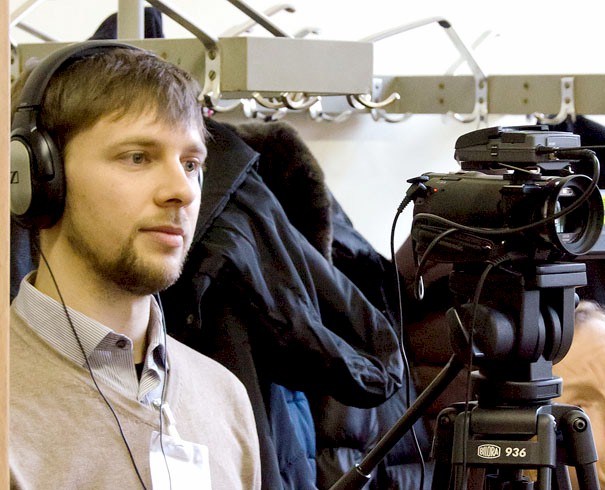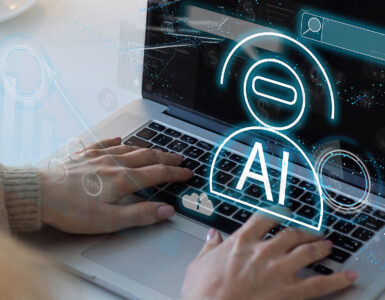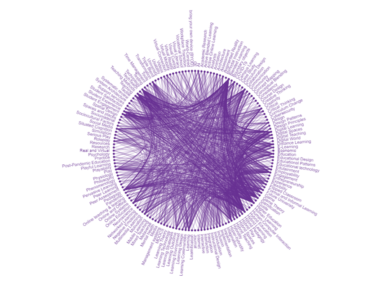Starting a new and exciting project around video-based-learning in the academic field always means that you have to reflect upon your own and others’ work and then risk taking a step in a new direction. A doable step. In one of our current educational projects at the Innovation in Learning Institute (ILI) at the University of Erlangen-Nuremberg (FAU), we are reflecting on our concepts and production approaches to video-based-learning, while producing an online course on “Innovation & Entrepreneurship”. The project is a collaboration between Prof. John Bessant from Exeter University and FAU.
Question: What can we do better this time? Where can we improve?
Reflection: In the field of multimedia learning, it is generally assumed that Video-Based Learning (VBL), if combined with appropriate pedagogical and didactic methods, has the potential to improve different learning aspects, such as the effectiveness and attractiveness of the learning experience as well as the learning outcomes.
The video production community adds to this assumption the notion that the learning process is most effective, when key video-making concepts and quality standards are respected. It’s commonly agreed that an inadequate protagonist, disturbing sound or an unfocused image prevents the learner from really learning. And finally, the key element of any video-based learning in the academic field as well as in any other, is excellent content and motivating didactics. In multimedia supported learning, videos have been used as an add-on element for enhancing all types of digital education and e-learning formats. In general, the leading media is a text presentation, enhanced with diverse didactical elements, such as a reader, illustrations, animations, assessments, etc. This basic concept has been used since the first e-learning courses were launched, and despite the huge increase in audio-visual resources and tools, hyperlinks and interactivity, the leading medium is still mostly text-based.
Action: One possible change or improvement is the transformation from a text-based to a video-guided learning concept, in which video is the central element throughout the learning experience. This means that the learning experience can be made more immersive. The starting point for the learner in every lesson is then always a video. And the learner can dive into the specific topic of the lesson with further texts or other information. This is a little paradigm shift regarding the leading medium..
Question: But how to develop learning videos that a) guide throughout the learning process, b) are engaging for students and c) facilitate active learning strategies which promote deeper learning?
Reflection: Learning videos usually run in a linear and continuous way and by watching them, learners can quickly get the feeling that they are better able to understand and retain content. Studies however show, that they can usually only remember about 20% or less of the learning matter afterwards. This phenomenon is also referred to as the “illusion of knowing” effect. A possible outcome: if we want learners to fully understand and retain video content, we have to actively involve them in the learning process.
Action: Create interactive films (VR and non-VR) that are pedagogically meaningful and support the learning process in a video-based-learning concept, in which video is the guiding element. Interactivity allows room for maneuver on the part of the learner. It makes the effects of the learner’s decisions immediately visible. And so, it transforms students from passive viewers into active learners.
Interaction can take place both on a macro level, i.e. outside the video, as well as on a micro level and thus within the video. In addition, interaction can arise from the provision of a potential possibility for action, or follow a concrete call to action. Depending on the nature of the interactivity, the learner is able to control the information intake himself/herself and to adapt it to his/her own needs, thus enabling individualised learning and increasing attention and participation (activation) in subsequent learning.
In the context of our project, we are developing key concepts towards a video-guided course with multiple interaction possibilities. The project brings together four motivated professionals: an excellent higher education teacher and protagonist, an experienced video maker with a special dedication to education, an animation designer with a high didactic talent and an e-learning instructional designer with good producer and management skills. This is an interesting journey with an open end. We’ll keep you informed on outcomes, evaluations and lessons learnt.

Authors
Sonia Hetzner & Markus Tischner, The Institute for Learning Innovation (ILI), Friedrich-Alexander-University Erlangen-Nuremberg (FAU), Germany














